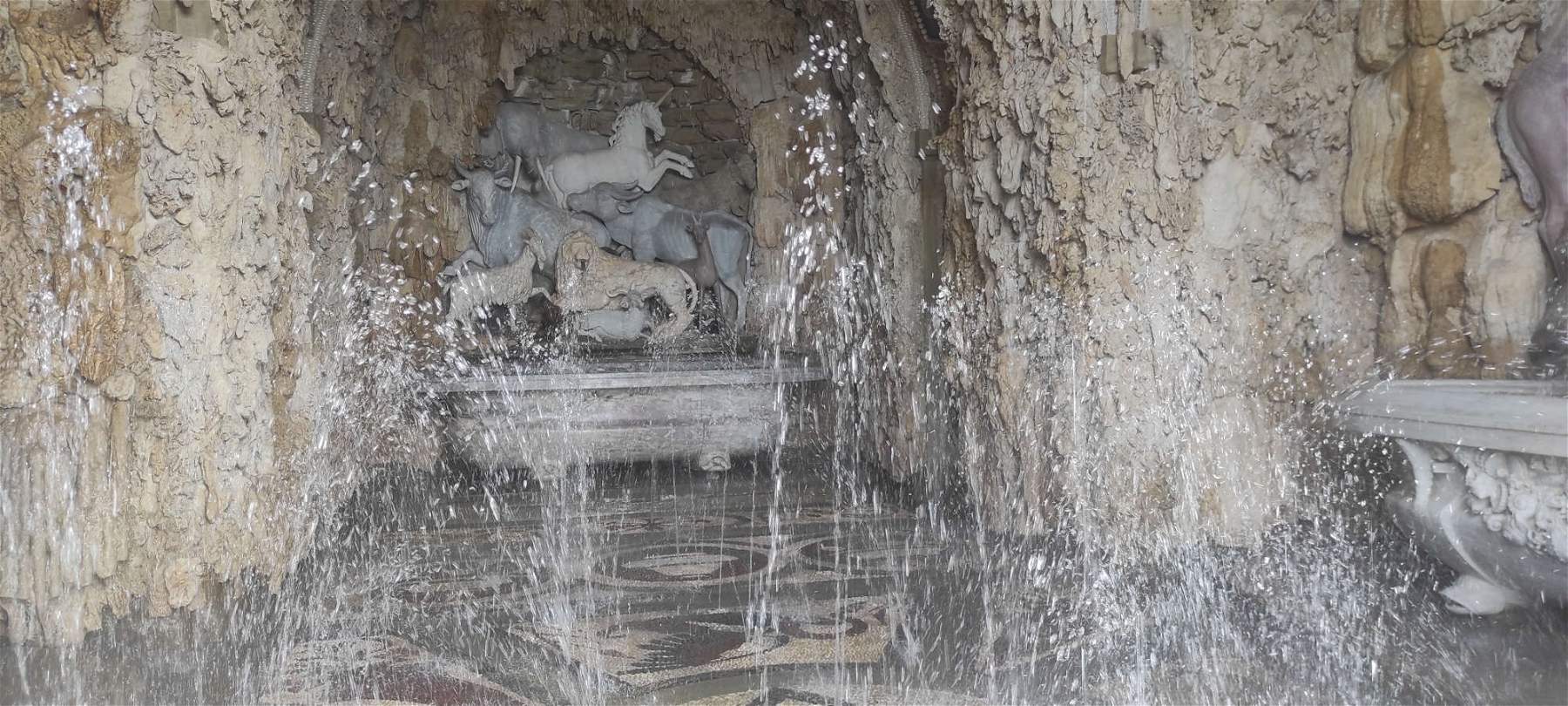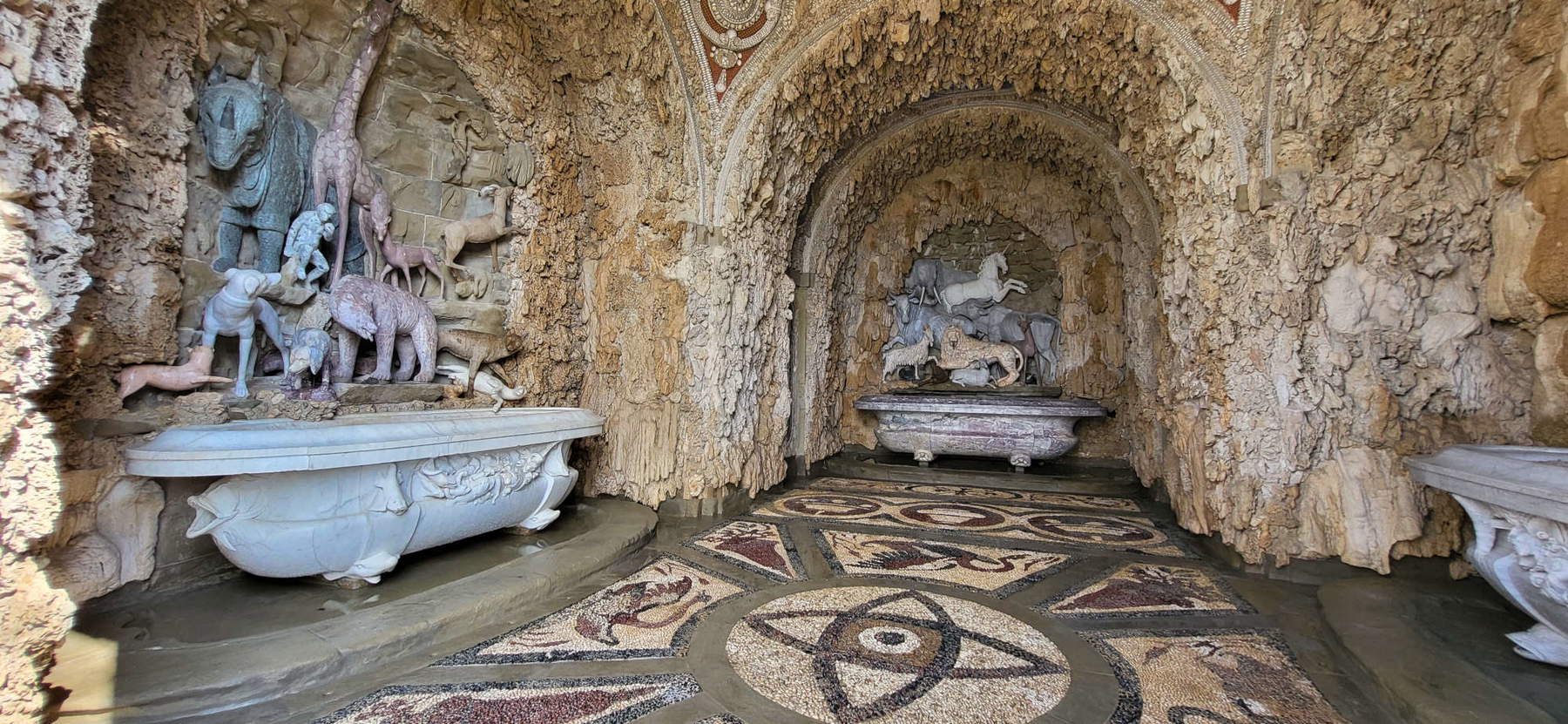In Florence, at the Villa Medicea di Castello, the water games of the recently restored Grotta degli Animali are back in action. From Saturday, April 27, therefore, citizens and tourists will be able to return on a regular basis to enjoy the extraordinary spectacle of the water games restored and brought back into operation in the Grotta degli Animali, one of the architectural jewels of the villa’s Garden, admired in the past by travelers from all over the world and an essential stop on the Grand Tour. A spectacle that takes us back to the time of Cosimo I, when the water features were created.
From April 27, 2024, to June 30, 2024, the games will be in operation every Saturday and Sunday at 10:30 a.m.; 12:30 p.m.; 4 p.m. and 6 p.m., for 15 minutes, thanks to a timed ignition that will be activated four times a day, with a hydraulic system that ensures the recovery of water, reducing water and energy waste, and that in the future can also be connected to the other fountains in the garden. Also continuing through June 30 are the staff-led escorted tours inside the Grotto Thursday through Sunday, 11 a.m. and 5 p.m. without reservations departing from the Garden entrance. Admission and visits always free of charge.
The Grotto, a masterpiece of Mannerist architecture with its pools, sculptural groups and polychrome decorations, is an exceptional testimony to the creativity and artistic and engineering genius of Tribolo completed by Giorgio Vasari with the contribution of Giambologna.
The water features, consisting of more than a hundred jets gushing from the vault, the floor and the mouths of some animals by means of a complex hydraulic system, amazed, entertained onlookers and made the environment come alive: as Giorgio Vasari himself writes in the proem to the Lives “[...] water rains by drippings of these Tartars, and by dripping makes sweetness in hearing and beauty in seeing.” The spectacular stone menagerie, composed of dozens and dozens of animals made with the use of different polychrome stones and painted stucco, came alive by the changing hues of the colors of the animals’ coats, and even seemed to acquire a voice through the different noises created by the gushing and falling of water on the different surfaces. Adding to the wonder were the iridescent effects given by the shell mosaics on the vault of the cave and the reflections of the bronze birds, made by Giambologna and his workshop now on display at the Bargello, which were placed between the sponges in the walls. In this prodigious and contemplative microcosm, therefore, stone loses its inertia thanks to the life-giving action of water and the astonishing level of technical expertise achieved by the engineers and artists of the time.
 Cave of the
Cave of the Cave of the
Cave of theThe central basin in front of the entrance features the unicorn, the only fantastic animal in the entire composition, which according to one legend has the power to heal the waters thanks to its magic horn, a symbol of the beneficial action of Cosimo’s policy, along with the lion, goat, ox, bull and sheep, among others.
The first basin on the left in white marble, with a composition of fish and other marine animals is surmounted by statues of the giraffe and the gray rhinoceros (different from natural anatomical features but realized on some iconographic specimens such as Dürer’s famous print), the bear, the monkey, along with the dog, the cat, the wolf about to maul a sheep, and the goat.
On the third basin to the right, in white marble decorated with dozens of varieties of carved shells, stands out the boar inspired by the Roman copy of a Hellenistic work, which Pope Pius IV gave to Cosimo I in 1560 during his visit to Rome, which Pietro Tacca the best pupil of Giambologna reproduced in bronze in 1612 and which everyone recognizes today in the copy of the Porcellino Fountain. Completing the ensemble are the horse, bull, dromedary, stylized leopard as in Renaissance frescoes, fallow and deer with real antler antlers, hunting dogs and a small monkey.
The complex restoration work, which lasted several years, involved the cooperation and commitment of numerous institutional partners and the support of patrons through Art Bonus. The relevant institutes of the Ministry of Culture over time, the Special Superintendence for the Florentine Museum Pole and the Regional Museums Directorate of Tuscany, launched the first phase of the project between 2012 and 2017 with initial ministerial funding. From 2018 to 2021, thanks to a POR-FESR grant disbursed by the Region of Tuscany, the lead agency of the Unesco site “Medici Villas and Gardens,” it was possible to complete the last tranche of the plumbing under the direction of the ABAP Superintendency for the metropolitan city of Florence.
The Art Bonus grant provided by Publiacqua spa in 2022/2023 allowed the restoration of the delicate polymateric surfaces of the Grotto and the rehabilitation of the balustrade and all the plastered surfaces of the wall bordering the Citrus Plan.
 |
| Florence, spectacular water features back in action at Villa Medicea di Castello |
Warning: the translation into English of the original Italian article was created using automatic tools. We undertake to review all articles, but we do not guarantee the total absence of inaccuracies in the translation due to the program. You can find the original by clicking on the ITA button. If you find any mistake,please contact us.